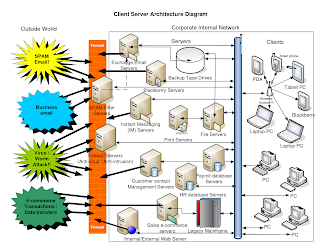We have often pointed out that servers have become one of the leading areas for the emergence of new memory products and technologies. However when one speaks of a “server,” is it the simplistic server below?
Or perhaps one of the servers in the following configuration?
The challenge is that when we refer to a “server,” we are clearly addressing a function rather than a hardware configuration. With this much variation in the specific tasks that can be performance, it is therefore no surprise that servers have become the primary application for architectural variation and advancement. The broad variety of server applications has been a rich source of new and innovative memory hardware configurations. Both system designers and end users have shown themselves to be extremely receptive to any new variations in cost and performance tradeoffs.
The replacement of high-reliability DRAM with limited endurance NAND as a method of lowering the power requirements in servers is one of the most remarkable recent innovations as system designers have clearly demonstrated their architectural design flexibility in the face of rapidly increasing data loads.
Computing infrastructure vendors constantly struggle with system-level cost and performance tradeoffs as they balance between the inherent limits in the performance and endurance of NAND, and the requirement to power and cool DRAMs. Faced with supporting the increase in world-wide data consumption, the necessity to protect data in case of a power interruption continues to increase in priority within that constantly evolving equation.
Viking’s newest product release is a prime example of an innovative application of memory echnologies. The company’s recently announced ArxCis-NV provides uninteruptable high-performance non-volatile memory modules without the usual limited endurance penalty of NAND and without the maintenance associated with wet battery resources.
The 12.6 GBytes per second throughput of these memory modules is provided by 1333MHz DDR3 DRAM that are familiar to system designers. The 240-pin DIMM is 30mm high in the current configuration with 25.5mm planned for the next design generation, and three density configurations are supported ranging from 2GB 1Rank up to an 8GB 2Rank configuration.
This latest product offering from Viking provides a very high performance option with the equally important feature of complete backup of the semiconductor industry memory in case of power failure.
Protection against potential data loss results from an elegant solution that combines an integrated SSD, Viking’s own “Data-Mover” logic, and an integrated power management system based onViking’s maintenance-free supercapacitor powerpack. DRAM memory is utilized for the all-important read/write performance, and enough power is stored in an on-module capacitor to transfer the data to nonvolatile NAND in case of a power failure. The powerpack is kept charged directly from the DIMM connector and is under the management of Viking’s integrated management circuitry that coordinates the data transfer to the SSD in the event of a power failure. The resulting modules comply with all JEDEC DDR2 mechanical restricutions and easily integrate into any x86 Servers. Target applications include RAID storage cache backup, OLTP databases, Enterprise cloud computing and virtualiation servers, as well as SAN management and storage consolidation systems.
We view DRAM and NAND as related technologies rather than two separate product lines. Viking’s latest product offering is consistent with our perspective of the application overlap between DRAM and NAND technologies, and we believe this hybrid configuration to be important for two reasons.
The first reason we believe this product to be important is the increasing likehood of power fluctuations and interuptions driven by the growth of data consumption. The power requirements to support volatile DRAM has already resulted in architectural changes that accomodate nonvolatile NAND in order to reduce the overall memory power consumption. Viking’s latest product product extends that concept by offering the higher performance of DRAM while still providing the nonvolatile data storage of NAND in case of power interuptions.
The second reason we believe this is an important product is because this application provides a clear cost/performance target for next generation memory technologies. The ultimate technology for these hybrid memory applications is a non-volatile memory technology with DRAM-like performance and endurance, and there are several such technologies on the horizon that can potentially meet these performance requirements. We therefore believe that Viking’s product will not only verify the market size and value of these high-performance non-volatile applications, but it also introduces Viking to the developers of the new and emerging memory technologies. as a potential future client.
www.convergentsemiconductors.com - Global Analysis of Memory Strategies and Issues

